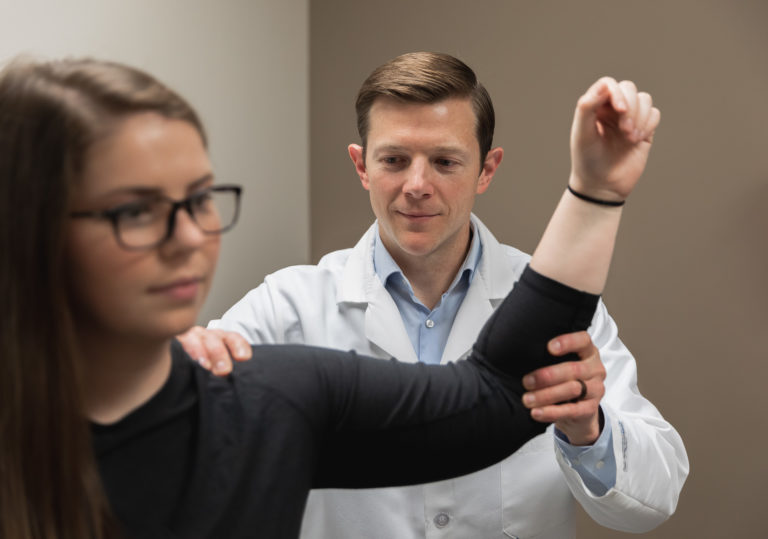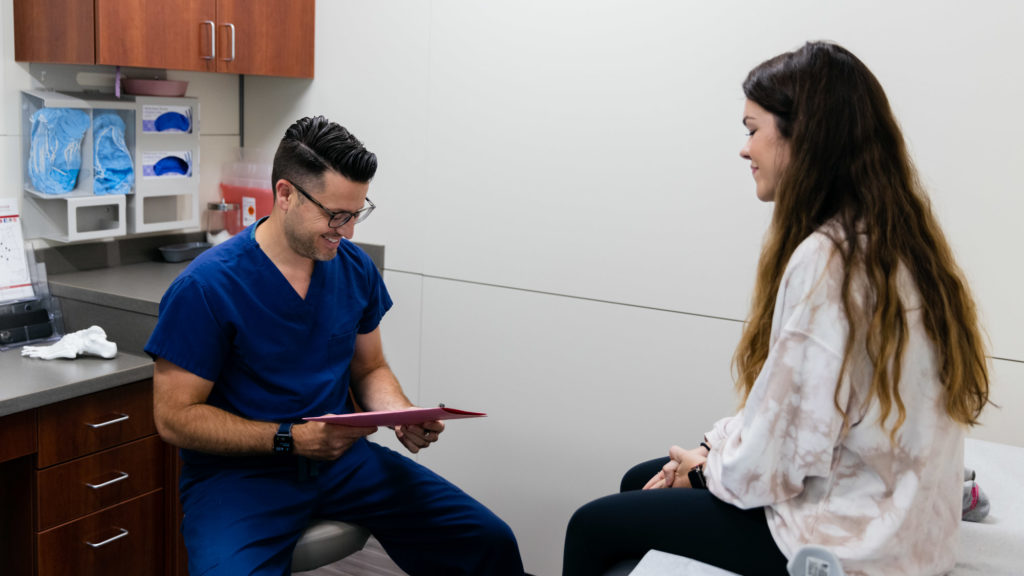As I explain in the video below, cubital tunnel syndrome is the compression of the ulnar nerve in the cubital tunnel, which is a passageway for the nerve right behind the bony bump on the inside of the elbow. This nerve, also known as the “funny bone,” can become pinched or trapped because of increased pressure from the bone or connective tissue, which decreases blood flow to the nerve and frequently leads to numbness and tingling in the ring and small fingers.
When rest or splinting does not provide adequate relief — or when symptoms progress to constant numbness or tingling — patients may wish to consider cubital tunnel release surgery. The information below provides a basic overview to help you prepare for cubital tunnel release.
Please note, however, that the treatment regimen for one patient may not be the proper treatment for another — as our patient, you will be given individualized care and treatment recommendations based on your unique needs. As always, it’s important to follow the specific instructions provided by your physician and care team before, during and after treatment.*
Preparing for Cubital Tunnel Release Surgery: Cubital tunnel release is performed under general anesthesia, and it is important to note the following:
- Avoid taking medicines that thin the blood (including anti-inflammatories, aspirin, Vitamin E or Coumadin) for at least seven days before surgery. Follow your doctor’s advice closely with regard to your medications.
- Do not eat or drink anything after midnight the night before surgery unless instructed otherwise. (For diabetic patients, we will make every attempt to schedule your procedure as the first case of the day.)
- Designate a friend or family member to assist you in receiving discharge instructions and to drive you home after surgery.
Dressing and Sutures: Sutures will dissolve on their own, and typically, a dressing is needed for 10-14 days after surgery. You’ll need to keep the dressing clean and dry (cover it while showering). After the dressing has been removed, you may shower with the wound uncovered, but you should not soak or immerse the area of incision for 3-5 days. Do not use ointment on the incision. It is OK to use a sling for comfort if needed.
Recovery Time: Varies per individual, but it could take up to 2-3 months to regain full, unrestricted use. Early motion is allowed, but you should not lift, push or pull anything greater than a pencil for six weeks after surgery.
Rehabilitation Therapy: Physical therapy may be needed; if so, it typically starts six weeks after surgery.
Driving: Do not drive while taking pain medications. Minimize driving until dressing is removed.
Returning to Work: If your job does not require the use of the arm that was operated on, you may return to work when you feel comfortable (unless instructed otherwise by your doctor).
Results: Results vary depending on the severity of the condition before surgery, and improvements may occur for up to 12-18 months after the procedure. If episodes of numbness were intermittent before surgery, they will most likely resolve after surgery — relief may be immediate, or it may take weeks or months. If numbness was constant, results will vary even more. For some, it will resolve completely; for others, it will simply improve. Some may not ever recover normal sensation, depending on the extent of nerve damage before surgery. However, while full sensation may not return, the surgery can prevent symptoms from getting worse.
For more information about this procedure, please make an appointment by calling 913-319-7600.
 About the Author: Brian Divelbiss, M.D. is a board-certified orthopedic surgeon specializing in conditions of the hands, wrists and upper extremities. He joined Dickson-Diveley Orthopaedics in 2001 and has served as President and CEO of the group since 2012.
About the Author: Brian Divelbiss, M.D. is a board-certified orthopedic surgeon specializing in conditions of the hands, wrists and upper extremities. He joined Dickson-Diveley Orthopaedics in 2001 and has served as President and CEO of the group since 2012.
* The medical information contained in the Dickson-Diveley Orthopaedics website is provided to increase your knowledge and understanding of orthopedic conditions. This information should not be interpreted as a recommendation for a specific medical or surgical treatment plan. As each patient may have specific symptoms or associated problems, the treatment regimen for a specific patient may not be the proper treatment for another.
Gaining knowledge and understanding of a particular problem or condition is the first step in any medical treatment plan. We believe the information presented on our website will be helpful for those individuals experiencing hand and wrist diseases, injuries, or other related problems. However, this information is not intended to replace the advice of your family physician. You are encouraged to consult with your physician to discuss any course of treatment presented or suggested.


